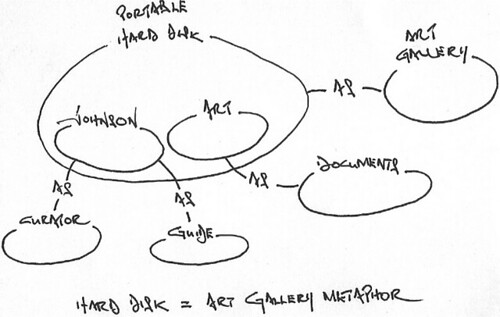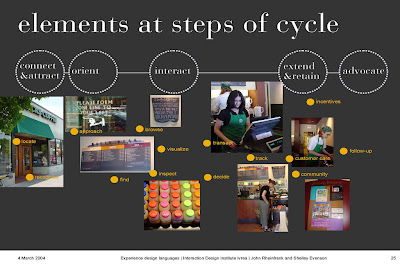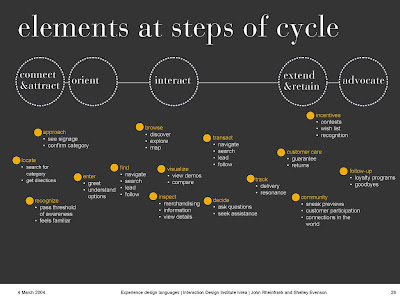 |
Monday, August 28, 2006
Sunday, August 27, 2006
Art Gallery

Let me take you through my gallery. The first piece of art we are looking at is Customer Knowledge. It was the page 33 in the Aspect 2000 annual report. Design in 2001 by Cahan & Associates.

This piece of art is interesting as I see it as a good way to introduce customers to companies’ staff. The company is Aspect and the customer is Saks. The art includes:
A person ( maybe she is a staff of Saks )
What Aspect offers Saks?
What value Saks gain?
What does Saks do?
Let’s move along this way to the second piece. The second piece we are looking at is Employee Talents. It was the page 9 in the Informatica 2000 annual report. Design in 2001 by Cahan & Associates.

This piece of art show us a way to understand employee have talents that we fail to see and capitalized on. Please replace the word most responsive supplier with your employee. The art includes a person and what he is also? He is also an Internet millionaire and medical school drop out.
Friday, August 25, 2006
Perspectives
What are perspectives?
Sense from:
What is a tree?
- A philosopher might call it ultimate truth.
- A botanist, a living organism.
- A physicist, a mass of protons and neutrons swirling around a nucleus.
- An artist, a unique shape with distinctive colouring.
- A carpenter, a potential table.
- To a dog, however, it is nothing but a urinal.
All descriptions, explanations or analyses are but a looking from one side at that which has infinite dimensions. The true nature of the tree is more than anything that can be said about it.
Wednesday, August 23, 2006
Meaningfull Life
Did I live meaningfully?
Sense from:
Elizabeth Kubler-Ross, arguably the world’s expert on people’s attitudes about death and dying, summarized a life of research in three simple questions. When people look back upon their lives, she found, they ask three questions that determine their sense of whether it was meaningful:
- Did I give and receive love?
- Did I become all I can be?
- Did I leave the planet a little better?
Tuesday, August 22, 2006
Experiential Learning Cycle
Source:
Roles of volunteer in development
Peace Corps
Page 31 – 33
The process of learning is a process of acquiring knowledge, skills, and attitudes so that we can solve problems and make changes in our lives as we move toward fulfilling our needs and our goals. This learning process can be conceived as a four-step cycle.
- We experience something.
- We review the experience critically.
- We draw a conclusion and / or infer useful insights ( lessons learned ).
- We apply or try out our new insights or hypotheses in a new situation ( which leads to another experience and so on ).

Experience
The “experience” that activates the experiential learning cycle may be an event from your past, an activity you conducting or a case study you read and analyze. In this step, you do something or remember something you did in the past. It usually involves uncovering new information that requires a response from you.
Reflection
Reflection is a way of exploring and sorting out what happened during the experience stage. What new information do you now have and what does it mean? What feelings has it provoked in you? How might you relate the experience to things you already know? If you are participating in a group activity, how is your learning experience similar to or different from that of others?
Drawing conclusions and lessons learned
After reflecting on the experience, we arrive at the critical stage of determining what lessons can be learned or what principles can be drawn from the experience. This is the “so what” stage. How does all of this fit together? What are the major themes or insights you can infer from your experience?
Planning and application
Planning and application is the stage where you relate the learning to your world and actually start using the information. It’s called the “now what” stage. What will you do differently now that you have learned these lessons? How will this new insight help you improve your technical ability, your interactions with the community, or your collaboration with your Counterparts? As you apply what you have learned, you generate new experiences and the “experiential learning cycle” starts all over again!
All four of these stages are important for a rich and complete learning experience. Sometimes, we jump too quickly from experience to experience and shortchange the other three steps in the learning cycle. It is important to be as conscious as possible of your own experiential learning processes and take the time to really reflect, draw conclusions, and apply lessons learned before moving to the next experience.
Friday, August 18, 2006
Starbucks customer journey
Wednesday, August 16, 2006
Happiness
 |
- Develop good social skills
- Volunteer
- Get married or at least cohabitate
- Purse meaningfull goals and take pleasure in the process
- Enjoy little things
Tuesday, August 15, 2006
Interest Expedition
Tuesday, August 8, 2006
Chris Anderson's views on innovation
- Do not hire for fit. Hire misfit. Look for connections between fit and misfit.
- Do not hire for deep knowledge, hire for broad knowledge.
- Innovation and value are going to be found in the synthesizers - the people who draw together stuff from multiple fields and use that to create an understanding of what the company should do.
- Businesses that don't offer meaning to their employees will not succeed in the long term.
Finding Ideas
Harvard Business Review 2002 Nov
Chris Anderson, Bronwyn Fryer
Page 18-19
ISSN: 00178012
Friday, August 4, 2006
Inspiration Sources
- Bauhaus
- Books
- Circus
- Conversion
- Fashion
- Flea Markets
- Garage Sales
- Internet
- Leonardo da Vinci
- Mistakes
- Music
- Music Stores
- Oblique Stratgies
- People
- Places
Magazines and Journals
- Business 2.0
- Dwell
- Fast Company
- Harvard Business Review
- I.D.
- Sloan Management Review
- Travel + Leisure
- Wallpaper
- WIRED
Learning is remembering what you're interested in
I do not remember everything I learn.
Question:
How can I remember what I have learned?
Possible Answer:
Instead of learning will result in remembering, why not - learning is remembering what you're interested in.
Sense from:
Information Anxiety 2
Richard Saul Wurman, Loring Leifer, David Sume
Que
Page 249 - 250
ISBN: 0789724103
Learning can be seen as the acquisition of information, but before it can take place, there must be interest; interest permeates all endeavors and precedes learning. In order to acquire and remember new knowledge, it must stimulate your curiosity in some way.
Interest defies all rules of memorization. Most researchers agree that people can retain only about seven bits in their short-term memory, such as the digits in a ZIP Code or telephone number.
Learning can be defined as the process of remembering what you are interested in. And both go hand in hand - warm hand in warm hand - with communication. The most effective communicators are those who understand the role interest plays in the successful delivery of messages, whether one is trying to explain astrophysics or help car owners in parking lots.
Multi-level parking garages are generally pretty threatening places. They conjure up frightening images - a favorite site for nefarious activities, clandestine meetings, rapists, and mob hitmen, to say nothing of the fear of remembering on what level you parked your car.
In downtown , I recall there was a multi-level parking garage that used the names of countries instead of numbers to denote each level. In the elevator, the buttons were labeled France, Germany, etc., each in a different typeface. In the elevator lobby on each floor, the national anthem of the country was broadcast through an intercom. While parking garages don't seem to inspire the imagination of the public, foreign countries do. People didn't forget where their cars were parked, and many left the garage smiling.
The developer of this parking garage took a mundane thing and not only made it work, but made it into a cultural learning center as well. This parking garage exemplified the principle that we learn only if we are interested in the subject.
In his book Freedom to Learn, Carl Rogers states that the only learning which significantly influences behavior is "selfdiscovered, self-appropriated" learning. Only when subject matter is perceived as being relevant to a person's own purposes will a significant amount of learning take place.
Information anxiety results from constant overstimulation; we are not given the time or opportunity to make transitions from one room or idea to the next. No one functions well perpetually gasping for breath. Learning (and interest) require way-stations where we call stop and think about an idea before moving on to the next.
Thursday, August 3, 2006
Design Rolodex
He gets his inspiration from his sketchbook and Rolodex cards.
Sense from:
Inspiration = ideas
Petrula Vrontikis
Page 106 -107
ISBN: 1-5649-6866-9
Wednesday, August 2, 2006
Steve Jobs Experience
I respect people who do their own thinking. One of them that belong to this class is Steve Jobs. He started the companies that given us Mac, iPod, Toy Story, The Incredibles...
He gave a speech to
He shares 3 experiences with the students:
- Connecting the dots
- Love and lost
- Death
I found 3 parts of the speech interesting:
Sometimes life hits you in the head with a brick. Don't lose faith. I'm convinced that the only thing that kept me going was that I loved what I did. You've got to find what you love. And that is as true for your work as it is for your lovers. Your work is going to fill a large part of your life and the only way to be truly satisfied is to do what you believe is great work. And the only way to do great work is to love what you do. If you haven't found it yet, keep looking. Don't settle.
Your time is limited, so don't waste it living someone else's life. Don't be trapped by dogma - which is living with the results of other people's thinking. Don't let the noise of other's opinions drown out your own inner voice. And most important, have the courage to follow your heart and intuition. They somehow already know what you truly want to become.
Stay Hungry. Stay Foolish.








